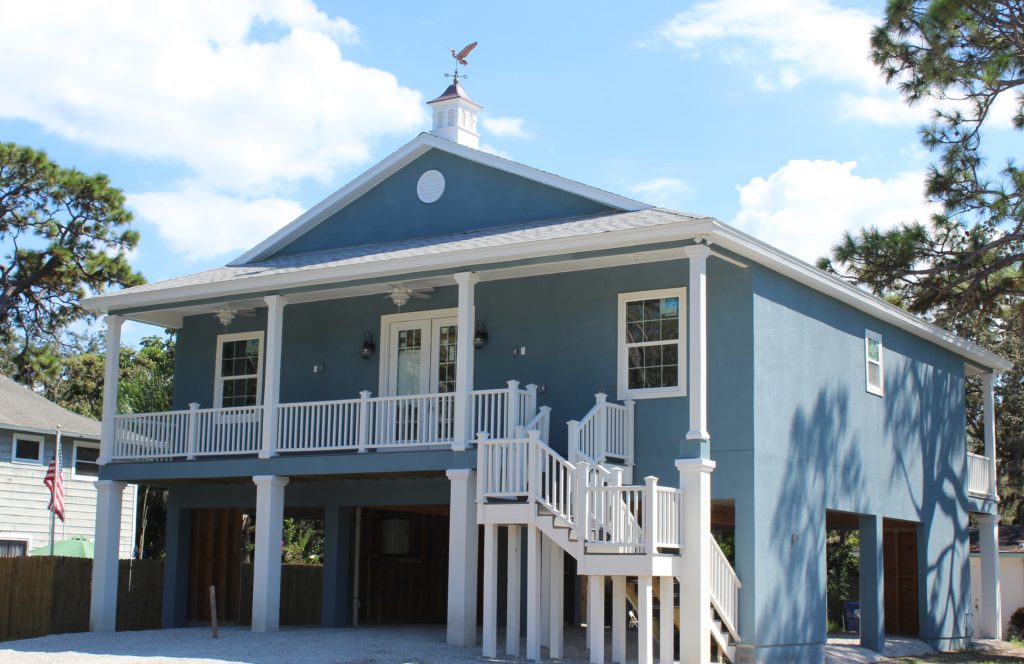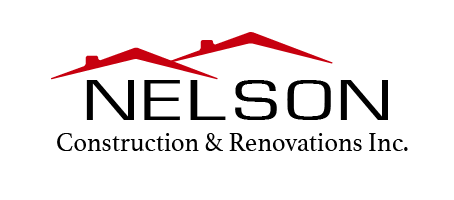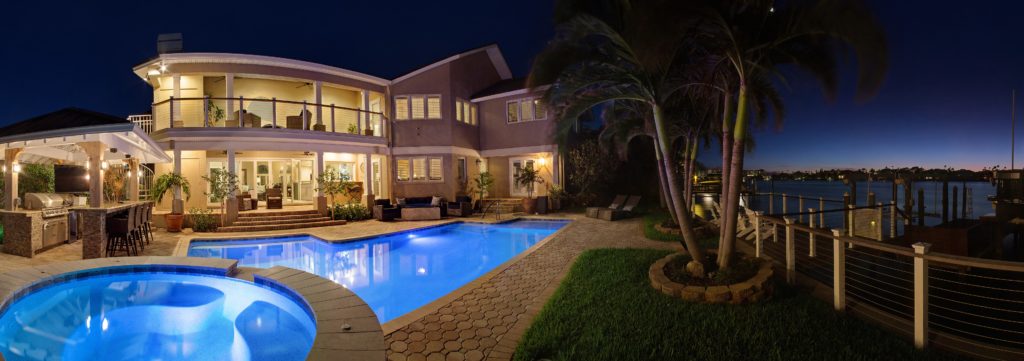FEMA has very specific regulations about homes that exist in a floodplain. This can affect you in a number of ways, especially if you don’t understand how it works. You may be paying far more for your home insurance than you need to, or you may be surprised when it comes time to do renovations – for FEMA will not allow you to do work on your home that costs more than 50% of its value. This is an important part of completed planning and is always one of our first questions when we start designing a home or planning a renovation. Read on for the Florida rules on renovating homes that are in a floodplain.
What is the Floodplain?
Federal Emergency Management (FEMA) has established a guideline for homes built below the hundred-year flood plan, which is a map indicating areas with a likelihood of flooding within 100 years. This is called the base flood elevation, also known as the BFE. The BFE is measured using the finished floor elevation – meaning where the surface of your floor lies.
You Could Be Paying For Flood Insurance When You Don’t Need To
It is important to note that even if your home is in neighborhood considered a flood zone on the map, the home itself may not be below the BFE. The only way to find out is to have an elevation survey done. This is a smart investment, however – for instance, we had one client come to us who had paid $30,000 over the course of ten years for flood insurance, only to discover that her home was actually above the BFE and flood insurance had not been necessary. So we always recommend getting an elevation survey of your home done, even if it costs a few hundred dollars.
Note: elevation requirements only apply to finished, livable space. So if your home is above the BFE but your garage is not (as long as it is non-air conditioned and thus not considered livable), you are still not required to pay flood insurance.

Renovations are Limited if Your Home is Below the Base Flood Elevation
If your home is below the base flood elevation, you will only be permitted to do renovations worth up to 50% of its depreciated value. Not only that, each municipality dictates how long you must wait before doing more improvements. So if you replace your roof, replace all your flooring, and re-do your kitchen and bathrooms, and this is worth 49% of the value of your home, some municipalities may make you wait between 1-5 years before you can do any more upgrades.
At Nelson Construction and Renovations, we have an entire department dedicated to permits and municipal services. This department is very familiar with FEMA regulations and knows the exact process for submitting a permit on a home below the BFE. The procedure includes:
- Getting an appraisal on the home with the total value, structural value, and depreciated value;
- Listing out the exact costs of every aspect of the project, from finishes and fixtures to trade work;
- Submitting a substantial improvement package.
Click here for an example of a substantial improvement package for the city of St. Pete.
What If You Are Building a Brand-New Home?
If your land is below the BFE and you are building a brand-new home, you must raise it above the floodplain. It is important to work with an expert engineer and Contractor who understand the FEMA guidelines and building code, so they can ensure your home is built properly above the BFE.

Nelson Construction and Renovations, a family business founded in 2006, is a design-build company that specializes in high-end remodels, home additions, and custom homes. With our headquarters in Clearwater, Florida, we serve homeowners all over Pinellas and Hillsborough Counties. We are an award-winning member of the National Association of the Remodeling Industry and have an A+ rating with the Better Business Bureau.
Creative Commons Attribution: Permission is granted to re-post this article in its entirety with credit to Nelson Construction and a clickable link back to this page.

